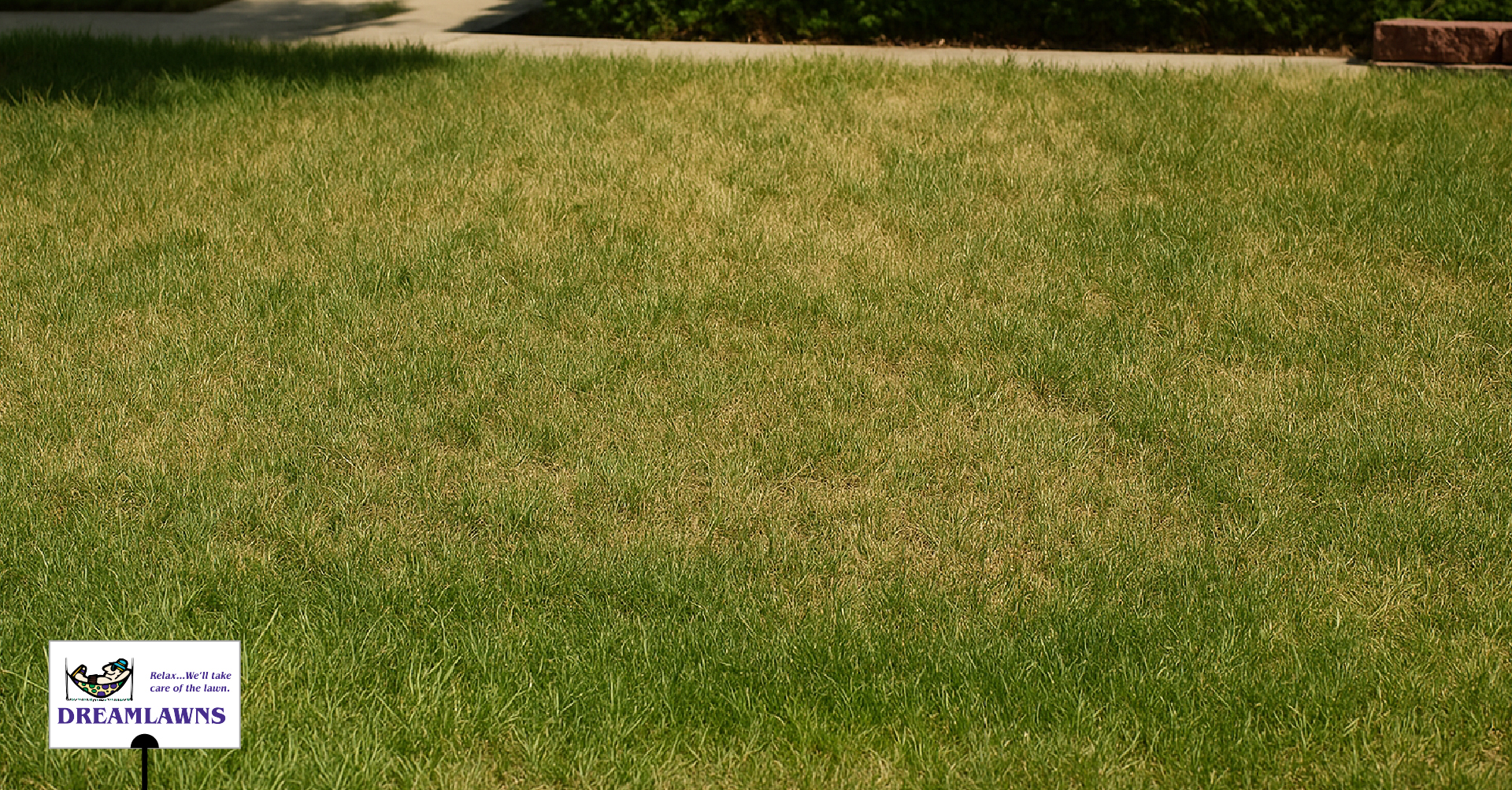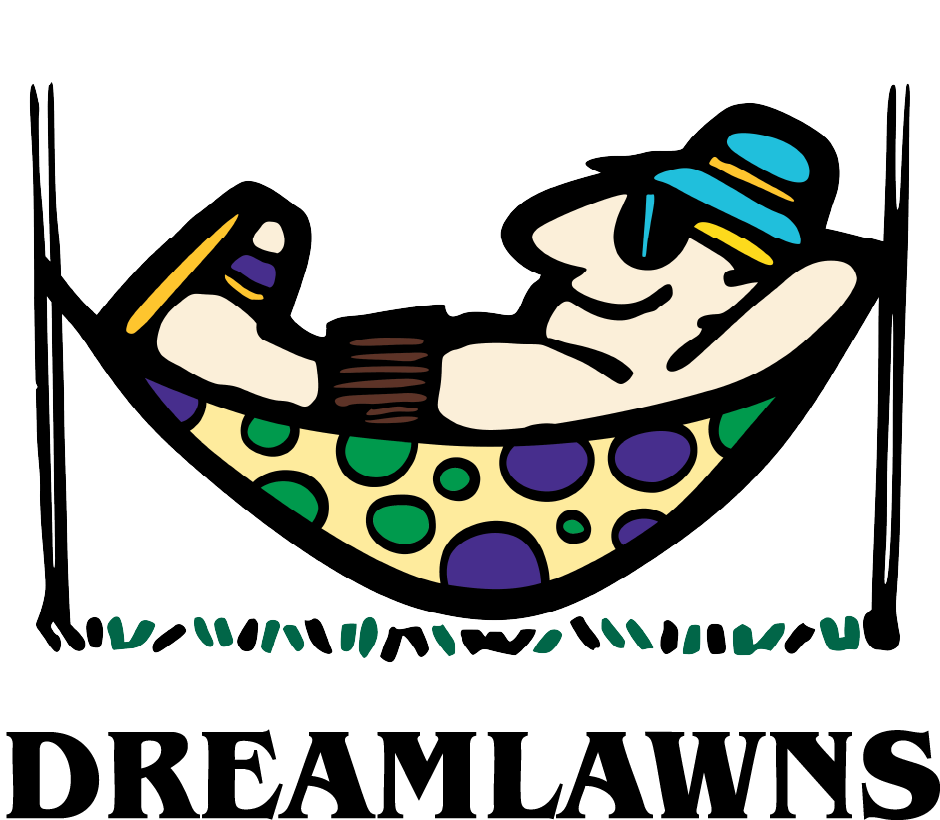
Dreamlawns Quick Cut: Early fall is the best time to repair Fescue lawns in Virginia Beach after summer stress. Heat, drought, disease, and compaction can leave turf thin and discolored, but cooler weather and warm soil create ideal recovery conditions. Aeration, overseeding with premium seed, and fall fertilization restore density and color while strengthening roots for winter. Dreamlawns offers both individual services and year-round programs to keep your lawn healthy season after season.
By the time summer winds down in Virginia Beach, even the best-kept Fescue lawns can start to look tired. Weeks of high heat, inconsistent rainfall, heavy foot traffic, and possible disease activity often leave turf looking dull, thin, or uneven in color.
The good news? Early fall is your lawn’s prime recovery season. Cooler temperatures and increased rainfall create the perfect conditions to repair summer damage, rebuild density, and restore that deep green color you love. Acting now not only improves your lawn’s appearance before winter, it also strengthens the turf for a healthier, more resilient spring.
Let’s explore what summer stress does to Fescue lawns, why early fall is the best time to act, how to improve soil conditions for new growth, and how professional services from Dreamlawns can bring your yard back to life.
What Summer Stress Really Does to Your Fescue Lawn
Fescue is a cool-season grass, which means it thrives in the mild weather of spring and fall but struggles through Virginia Beach’s hot, humid summers. Even when it survives the season, summer conditions often leave behind visible and hidden damage that won’t correct itself without intervention.
Common impacts of summer stress include:
- Leaf Scorch and Browning: Prolonged exposure to intense sunlight and high temperatures can cause grass blades to lose moisture faster than roots can replace it, leading to faded color and brittle texture.
- Shallow Root Development: When soil temperatures climb, Fescue naturally shifts energy away from root growth. Over time, this limits the plant’s ability to draw water and nutrients, making it less resilient in both drought and disease situations.
- Disease Outbreaks: Conditions in late summer are ideal for fungal diseases like Brown Patch and Gray Leaf Spot. Once these diseases weaken the turf, the damaged areas become prime targets for weeds and pests.
- Wear and Compaction: Summer gatherings, kids playing, and pets running across the lawn can compact the soil. Compacted soil limits airflow and water movement, making it harder for grass to recover.
Unlike warm-season grasses that spread to fill bare spots, Fescue stays exactly as thick, or thin, as it was before. That’s why any loss in density during summer must be actively repaired in the fall to prevent further decline.
Early Fall is the Best Time to Repair Cool-Season Lawns
If you’re wondering when to seed lawn for the best results, the answer for Fescue in Virginia Beach is almost always early fall, typically late September through early November. This period offers an ideal blend of conditions that help your turf recover from summer stress and prepare for the months ahead.
Why early fall works so well:
- Soil is Still Warm, Air is Cooler: Warm soil accelerates seed germination, while cooler air temperatures reduce heat stress on both new seedlings and existing turf.
- Less Weed Competition: Many aggressive summer weeds are fading out, making it easier for new grass to establish without being choked out.
- More Consistent Moisture: Fall often brings rainfall, reducing the need for constant irrigation and helping new seedlings root deeply.
- Stronger Roots Before Winter: Grass seeded in early fall has several weeks to grow and strengthen before winter dormancy, resulting in healthier turf that greens up quickly in spring.
Delaying lawn recovery until spring can be tempting, but waiting means weeds have all winter to move in, and your lawn heads into another summer with weak or thin turf. Taking action now ensures you get the most out of the recovery window nature provides.
Improving Soil Conditions for Faster Recovery
Even the highest-quality seed and perfect timing won’t deliver results if your soil isn’t ready to support new growth. After months of summer heat, heavy foot traffic, and occasional downpours, many lawns in Virginia Beach are left with compacted soil and reduced nutrient availability, two major barriers to healthy turf recovery.
Key steps to prepare your soil for fall recovery:
- Relieve Soil Compaction with Aeration: Core aeration removes small plugs of soil, creating space for air, water, and nutrients to penetrate deeper. This not only helps existing roots breathe but also provides ideal seed-to-soil contact for any overseeding.
- Address pH Imbalances: Fescue grows best in a slightly acidic to neutral pH, around 5.5–7.5. If your soil is too acidic or alkaline, nutrient uptake is compromised. A simple soil test can guide whether lime or other amendments are needed.
- Add Organic Matter: Incorporating compost or topdressing with a thin layer of organic material improves soil structure, increases moisture retention, and boosts microbial activity, all of which support healthy root growth.
- Ensure Proper Drainage: Low spots that hold water encourage disease and suffocate roots. Grading, aeration, or soil amendments can improve drainage and reduce the risk of turf stress in the future.
By improving your soil before seeding or fertilizing, you set the stage for faster germination, deeper rooting, and stronger overall turf. This preparation step often makes the difference between a lawn that just survives the winter and one that thrives well into spring.
Why You Shouldn’t Wait to Fix Discoloration and Bare Spots
It’s easy to put off lawn repairs, especially when cooler temperatures make your yard look a little better on its own. But delaying action can set your Fescue lawn back for months and make recovery more difficult and expensive.
Here’s what happens if you wait:
Weeds Move In Quickly: Open soil is an open invitation for weeds like chickweed, henbit, and annual bluegrass (Poa Annua) to germinate in fall and winter. Once established, these weeds compete for nutrients, water, and sunlight, making spring recovery harder.
Thin Turf Enters Winter Weakened: Grass that’s already sparse has less protection against winter temperature swings, frost, and disease. This often leads to more bare spots by spring.
Poor Spring Performance: Lawns that skip fall recovery spend spring struggling to fill in rather than building density and color. By the time they catch up, summer stress is right around the corner again.
The early fall window is your chance to reset the turf and give it the density, root strength, and resilience it needs to handle winter and thrive in the next growing season. Acting now is far easier than trying to undo months of decline later.
Dreamlawns’ Professional Approach to Lawn Recovery
When your Fescue lawn is feeling the effects of summer stress, the right services delivered at the right time can make all the difference. At Dreamlawns, we offer both individual lawn care services like aeration, seeding, and fertilization, and comprehensive year-round programs that are tailored to the needs of Virginia Beach lawns.
Our team combines proven techniques and expert timing to restore lawn health in early fall, while also setting your turf up for long-term success.
Here’s what sets our recovery services apart:
- Aeration and Overseeding: We pair core aeration with overseeding to relieve compaction, improve soil conditions, and ensure superior seed-to-soil contact. This helps new seedlings establish quickly and evenly.
- Premium Seed Selection: We use top-performing seed blends like Aqua Maxx tall fescue, proven to handle the region’s heat, humidity, and disease pressure better than generic store-bought mixes.
- Fertilization to Support Recovery: Our recovery plans integrate high-quality fertilizers timed for fall growth, delivering nutrients when your lawn needs them most to build strong roots before winter.
- Custom-Tailored Service: Every lawn has its own trouble spots and soil challenges. We adjust seeding rates, treatment timing, and post-care instructions to fit your lawn’s specific needs.
With Dreamlawns, you’re not just repairing summer damage, you’re building a stronger, healthier lawn that’s ready to handle whatever the next season brings.
Restore Your Lawn Now for a Better Spring
Summer can be tough on Fescue lawns, but early fall gives you the perfect window to repair the damage. By acting now, you can rebuild density, restore vibrant color, and strengthen roots, setting your lawn up to handle winter and come back greener than ever in spring.
Whether you choose a single targeted service or our full year-round lawn care program, Dreamlawns has the expertise and local knowledge to get results that last.
Don’t let thin turf and discoloration carry over into next year. Contact us today to schedule your fall services and give your lawn the boost it needs.
Dreamlawns provides superior lawn care service to Virginia Beach & Chesapeake VA residents.




